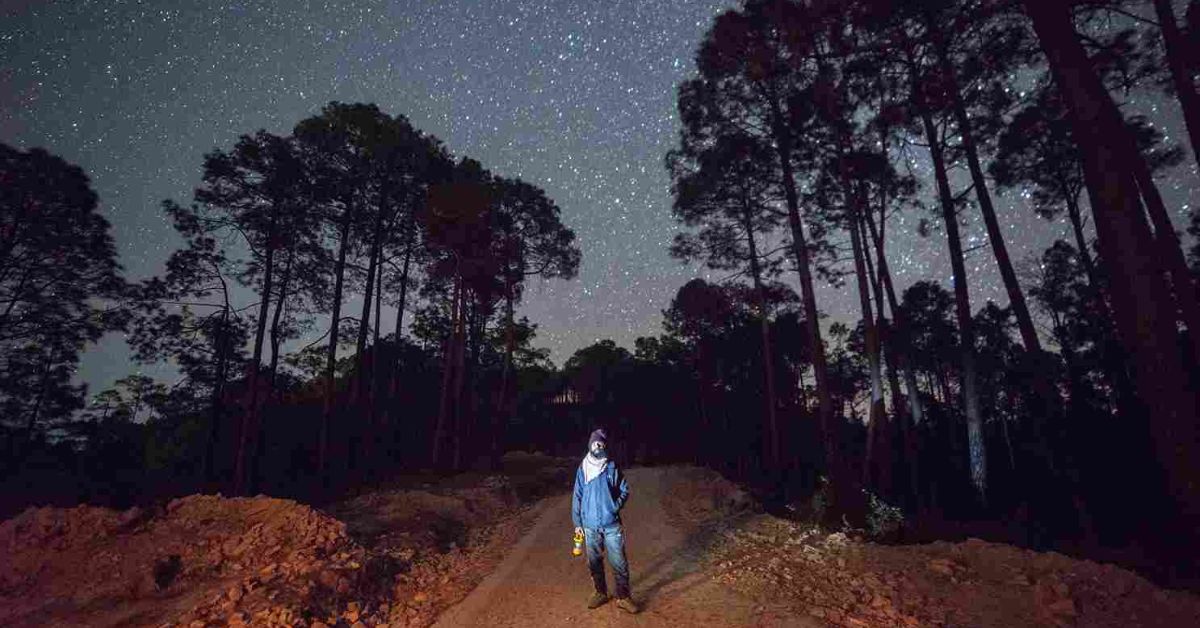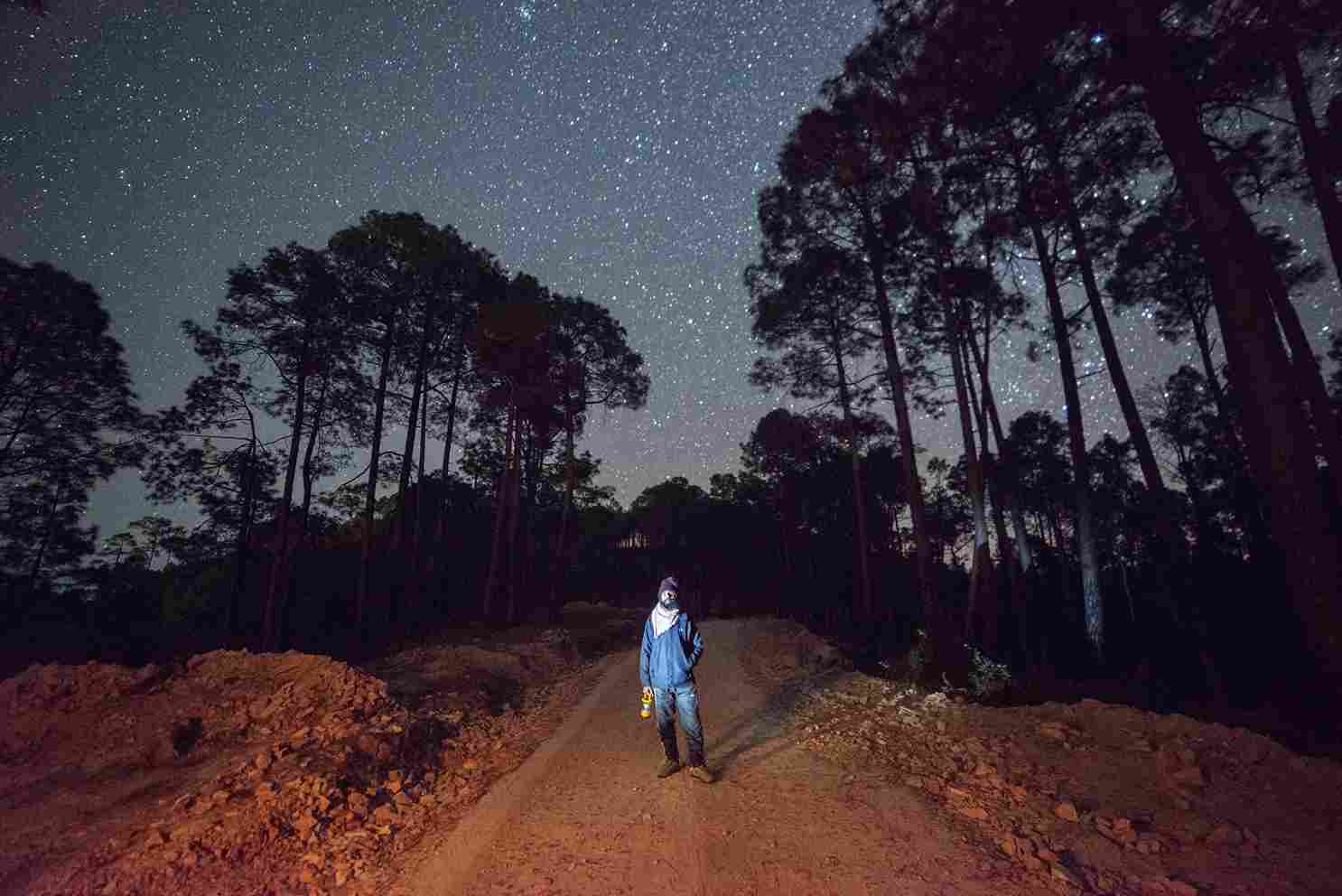A Duo is Setting Up Stargazing Observatories in India’s Most Picturesque Destinations
Friends Paul Savio and Ramashish Ray founded Starscapes, a stargazing and astronomy-focused startup that lets visitors understand the wonders and mysteries of space in picturesque locations like Ooty, Bhimtal, and Jaipur.

Ramashish Ray, an entrepreneur from Delhi, recalls his old cottage in Kausani, Uttarakhand, that had a unique charm. “Guests had a wonderful time using the telescope in the garden and gazing up at the heavens,” the 50-year-old says.
At the time, he was working on setting up a mobile accessories manufacturing business, joined by Paul Savio, an ex-colleague and friend from Bengaluru.
As the two put their heads together to discuss business plans, they bonded over their love for astronomy.
While Ramashish had always been an avid photographer, Paul was passionate about astronomy since childhood and was part of his college’s Stargazing Club.
The duo would share with one another their own adventures in the arena of space, as well as their fascination with the intricacies of the universe. Soon, their shared interest took off and they started putting the puzzle pieces together for a venture in the realm of space.

‘We figured it was a good business idea.’
Ramashish had noticed the kind of thrill guests associated with using the telescope at the cottage, and so the duo thought, “Why not test the waters and open the telescope to the public for a ticketed experience?” They did so in 2015 with a simple aim in mind.
“We wanted people to fully experience the joy of rediscovering the night sky and give their children the opportunity to enjoy it the same way they did in their childhood,” says Paul.
News spread about the cottage, where one could get a glimpse of the universe. Before they knew it, there was a long waiting list of guests.
“We thought of expanding the model across the country, which led to the birth of Starscapes in 2017. We registered the business in Gurugram,” says Paul, co-founder and CEO of Starscapes.
He says this is “India’s first and only chain of observatories that gives travel enthusiasts an integrated astronomy experience while promoting astro tourism.”
“We wanted to make astronomy experiences available for everyone,” he adds. Through the years, what started as an idea with one observatory in Kausani has grown to over 11 locations across seven states.
“We set up private observatories in Bhimtal in Uttarakhand, Jaipur in Rajasthan, and Ooty in Tamil Nadu. We have two more coming up at Coorg in Karnataka and Mukteshwar in Uttarakhand,” says Ramashish, founder and product head of the company.

These observatories are complete with “state-of-the-art” equipment for observations, astrophotography and research projects.
The sky is closer than you think
In the following years, the duo realised they wanted people to “appreciate the enormity of the universe and be left stunned at the marvels of space”. This would only be possible if the participants could grasp the scientific wonders of the world beyond our own.
Ramashish and Paul spent the next three years reaching out to those who had a thirst for knowledge and wanted to satisfy their curiosity by delving deeper into space matters.
“We began conducting astro-tours in Spiti Valley and Narkanda, astrophotography workshops at the observatory in Kausani, and other remote dark sky locations like the Sandhan Valley in Maharashtra,” says Paul.
The team also held workshops for schools and colleges, which he recalls as their most exciting time. These, he adds, were targeted at helping children experience the science and facts about space that they learnt in theory.
“Children learn how to build rockets with materials such as water bottles, chart papers and simple items they can find at home. We also teach them to make sundials, pinhole cameras, and projectors. At the Solar Observation Show, they get to see the sun through a telescope fitted with special filters.”
While these are beginner-level workshops, they also hold astrophotography workshops targeted at more invested astro-enthusiasts.
“These are conducted by experienced and published photographers and held at our observatories over two nights and three days,” explains Paul. During the stay, participants learn to capture images, sometimes over many hours, and process them.

The result is fabulous pictures of the night sky — star trails, landscapes and sky composites, the Milky Way, and deep sky objects.
A galaxy with so much to offer
But while all of this may seem exciting, Paul says astronomy experiences are best in certain environments. “To get the best of them, there must be minimal light pollution and high-quality equipment.”
He adds that these criteria played a vital role when they were deciding upon locations to set up the observatories. They ensured that the chosen areas had dark skies and were accessible to tourists. “We also ensured that the state-of-the-art telescopes could be mounted and placed safely,” says Paul.
So if one partakes in a Starscapes experience, what are they in for?
“Many things,” says Ramashish.
“There’s the guided session wherein people get a detailed understanding of the universe, while the more adventurous can go in for the ‘solar observation’ to discover aspects of the Sun,” says Paul.
Those interested in the technology behind space escapades can learn how rockets travel to outer space. Even those content to just lie down on a carpet of green and watch the night sky will find fulfilment, the founders say.
“If you wish to have a picture against a backdrop of the star-studded night sky, we can arrange that,” says Paul.
As for how these events have been received by people, the duo says it has been a journey of growth and learning.
“These days many parents want their kids to have experiences that are fun and also contribute to learning. There is also the buzz around ISRO’s Human Spaceflight Program and NASA’s Artemis Moon Mission,” Paul notes. “All of this, combined with the talk about SpaceX, has transformed astronomy into something of a trending subject, which has been a boon for Starscapes.”
He recounts the fascination that people feel when they first spot craters on the Moon or Saturn.
“When you look at Saturn, it appears as one of the brightest objects in the night sky. But through a telescope, you see the rings, the satellites of the planet….it always elicits a gasp of disbelief,” he says.
Subramanya SV, who has been a guest at Starscapes, recalls his visits to the Kausani observatory. “The quality of the equipment and Mr Puran, the star guide, were terrific. Even today, when we look at the sky, we are able to show Venus, Mars, and other planets. We went there multiple times because the observatory was very close to the place we stayed. Our kids have very fond memories of visiting the observatory and that’s something that they love sharing with people.”
Touching horizons as they grow
But while the venture is gaining traction fast, it hasn’t been without its challenges.
“Of course, the COVID lockdowns deterred business as they came during the summers, which is in fact the best time for stargazing,” says Paul.
He adds that with no industry parallel to theirs, they have always needed to train people from scratch to be able to offer these experiences to the public. “The people we have trained are not easily replaceable. Thus, keeping them with us through the lockdown, when they had nothing to do, was financially and emotionally the toughest challenge we had.”
That said, there has been a beacon of light with lockdown rules being relaxed and people wanting to get back into their daily leisure and learning.
“We are looking to open new observatories across India,” says Paul. “Kausani is one of our hit locations, mainly for its pristine skies. We expect Madikeri to elicit a similar reaction.”
If you are an astro enthusiast and interested in booking your spot, you can join the astrophotography workshops that range between Rs 5,000 and Rs 10,000 per head for three days. You can also be a part of the experiential science activities that start at Rs 200 and last for 30 minutes to an hour.
There are also observation sessions and workshops around the Sun, and at night there are shows about the sky, which can last between 45 minutes and one hour and cost between Rs 300 and Rs 1000.
As for how business has been, the duo says it is slowly picking up after a slump.
“We see up to 3,000 tickets per month per location in the summer, which are mainly limited by our handling capacity. This will go up as we enhance our capacity in the biggest locations. The average spend per guest is around Rs 500 per visit.”
The bootstrapped company intends to have permanent observatories in 30 locations across the country.
But aside from the flourishing business, Paul says there has always been certain awe associated with building this astronomical venture.
“The universe puts you in a place that lets you know you are just a speck in the grand scheme of things. We are just a fleeting moment.” If you found our stories insightful, informative, or even just enjoyable, we invite you to consider making a voluntary payment to support the work we do at The Better India. Your contribution helps us continue producing quality content that educates, inspires, and drives positive change. Choose one of the payment options below for your contribution- By paying for the stories you value, you directly contribute to sustaining our efforts focused on making a difference in the world. Together, let’s ensure that impactful stories continue to be told and shared, enriching lives and communities alike. Thank you for your support. Here are some frequently asked questions you might find helpful to know why you are contributing?

You can check out future Starscapes experiences here.
Edited by Divya Sethu
This story made me
-
97
-
121
-
89
-
167















